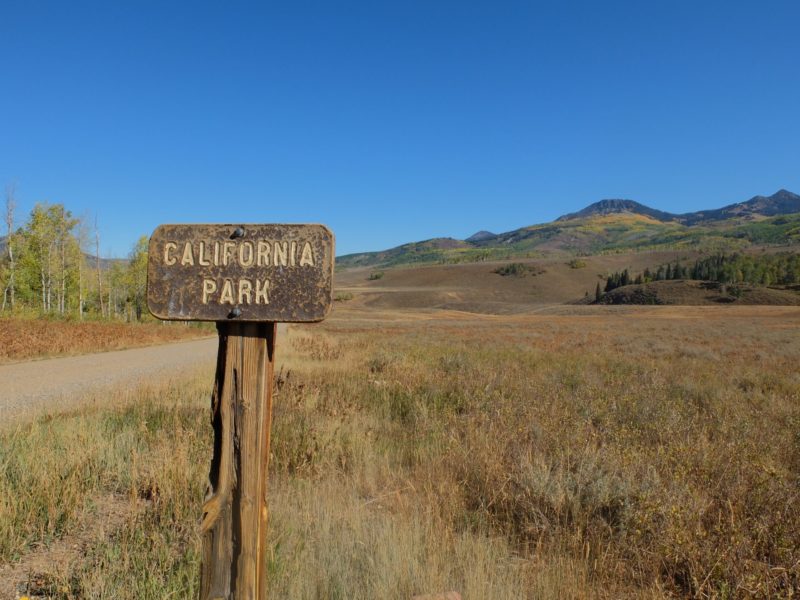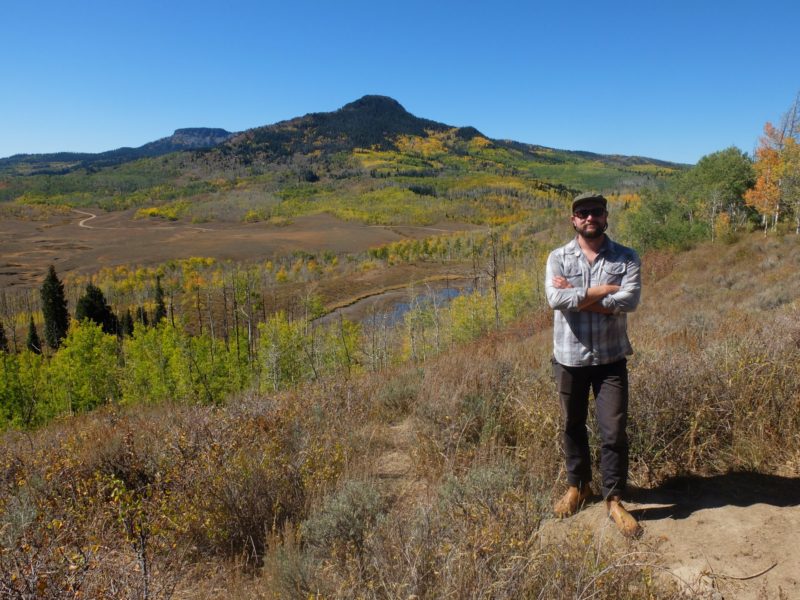Leopold’s axe: History as a tool for conservation
09 January 2020 – Dillon Maxwell

The southern end of California Park. Photo credit: Dillon Maxwell.
In A Sand County Almanac, Aldo Leopold wrote, “There is an allegory for historians in the diverse functions of saw, wedge, and axe.” The saw works across years to pull out “little chips of facts”; the wedge splits wood into collective views; the axe lops limbs for the “peripheral rings of the recent past.” Leopold’s comparison of history to a sawyer’s tools is accurate, but I think it can go beyond comparison and into actual practice. Over the last year, as I have been writing a land use history for the U.S. Forest Service, I discovered that history isn’t just like a tool for conservation, it is a tool for conservation.
Since August 2018 I have been writing a General Technical Report in collaboration with Forest Service scientists and rangeland managers as part of a larger restoration project. This project had its origins in an oral history interview that scientists from both the Forest Service and Colorado State University conducted with John Sundberg, a retired rangeland manager for USFS. They wanted to learn more about the history of a high elevation rangeland in Northern Colorado. Sundberg was a career USFS employee and a third-generation local whose grandfather ran cattle in the area in the 1900s. I was fascinated by the story and wanted to work on the project. The following week I contacted one of the project’s principal investigators and arranged a meeting. There, we drew up a work plan and hammered out the details for me to join the project as a researcher.
My goal for the project is to produce a document that recounts the history of human interactions with the environment at their site. The manuscript provides land managers and scientists with historic context to pinpoint causes of ecological disturbance over time, enabling them to begin addressing issues on the range. It documents land use and vegetation change in California Park, a high elevation rangeland surrounded by mountains in Northwestern Colorado. Its immense natural beauty has a history to match. For hundreds of years, historic actors have changed how the landscape looks and functions. Ute hunting parties, cattlemen and their herds, sheepherders and their flocks, recreationists, and forest rangers have altered the landscape in various ways. Researchers have wondered if it was people’s actions, the unique soil composition of the rangeland, or a mixture of both that created the park’s complex management issues today. This history is one way of helping answer that question.
This project has come with many learning moments. Working with scientists pushed me out of my comfort zone as a historian, writer, and researcher. Not only did I need to know the history of the site, but I also needed to understand the science in order to make my work more compelling and comprehensible for various constituencies. For instance, I found numerous newspaper clippings discussing an outbreak of tall larkspur, a plant deadly to cattle, in California Park in 1915. I couldn’t just say it happened, cite the newspaper articles, and move on. I needed to dig deeper to understand why larkspur is poisonous, where on the landscape it grows, and why cattle over 100 years ago may have been eating it. Learning the science behind the site made me not only a better historian; it also made me much more critical of the primary source documents I was reading. In short, the project gave me a deeper appreciation of the land and the people who manage it.

The author in California Park. Photo credit: Medicine Bow-Routt National Forest Staff.
I also learned how historical context and perspective can push beyond scientific data. For example, a 2003 management plan for California Park noted that there were several homesteaders in the area, but the plan did not elaborate on this history. For the scientists working on this project, homesteads are import sites that carry ecological legacies exceeding their human occupancy. Today, only one of the homesteads still stands—fires, reclamation projects, and time have taken all of the others down. Through my research, I found the locations of non-extant homesteads and added information about the homesteaders themselves. I researched where the homesteads were located and mapped them to find out what types of soil the homesteaders worked on. In some cases, my research even revealed what types of plants homesteaders were growing. Scientists can add this information to the current conversation on the range condition in California Park.
As Aldo Leopold wrote, history saws, wedges, and limbs away at a subject, pulling out facts, perspectives, and peripheral views. Bringing a historian onto a conservation project—with their metaphorical saw, wedge, and axe— brought a fuller picture to the land under restoration. I became a conservation worker, and my words became tools. I didn’t just learn the science behind my site; I learned about the methods, management strategies, and interpretive voice that scientists use in their projects. In the long run, this will help me work more effectively across disciplines. For the scientists, hopefully they saw value in having a historian add context and additional data to conservation-based projects. In the end, having both humanities and science come together on this project brought a fuller picture to the site and hopefully a healthier ecology in the future.
~Dillon Maxwell is an environmental and public historian living on Colorado’s Front Range. He received a master’s in history from Colorado State University in 2019. Dillon currently works for the Center for Environmental Management of Military Lands while completing his project with the Forest Service.




The enthusiasm for which Author Dillon Maxwell writes is contagious. A seed is planted to learn more on the correlations between science and history.
Thanks for the kind words, Katha! I really appreciate it!
I would really enjoy reading your final report. I appreciate your efforts to delve deeper into the entire history of that area. It is important to understand the natural and human impact.
Excellent post Dillon. Really enjoyed reading what you’ve been working on and helping with better management. Keep up the great work!
Thank you for taking the time to read it and for the kind words, Dr. LaBelle! Hope you are well!
Nicely written, first-rate essay! A wonderful companion to Brian Donahue’s “Historian With a Chainsaw.”
Thanks, Dr. Fiege! It means a lot coming from you! I will be sure to read Donahue’s piece.
As I shift my public history gears into environmental history, I read this blog post as a lesson for federal land management public history! Enjoyed reading and learning, Dillon.